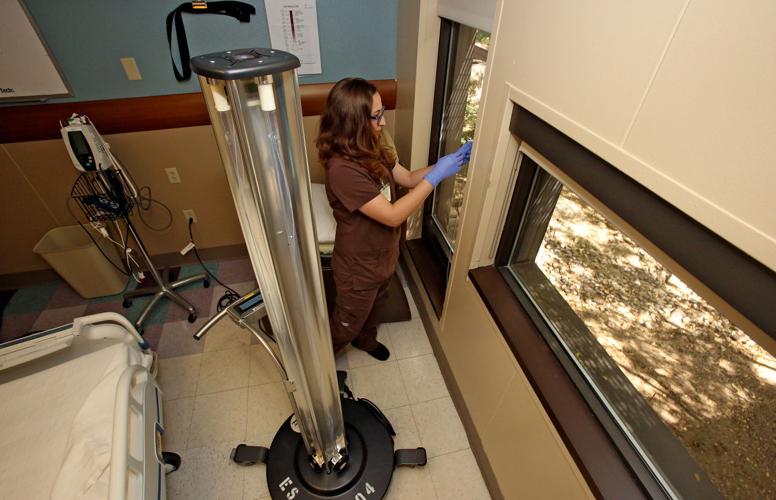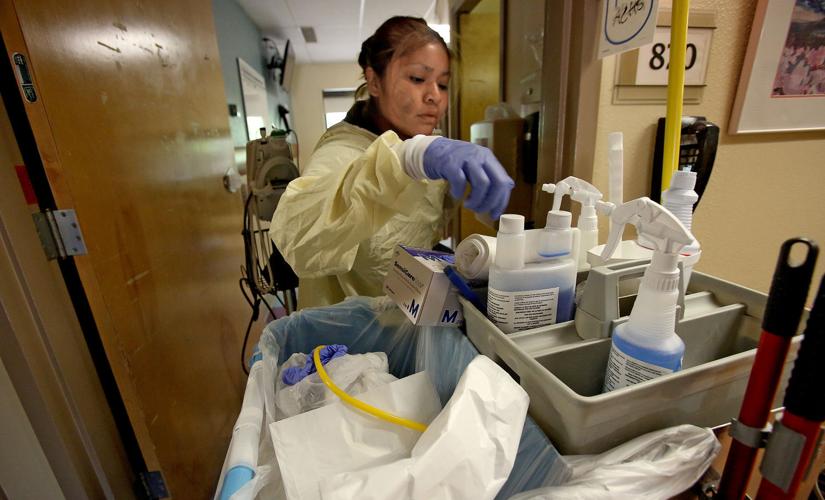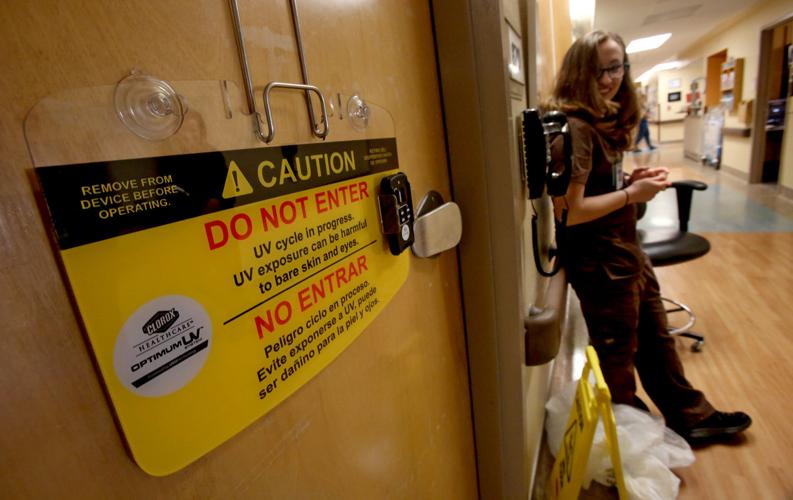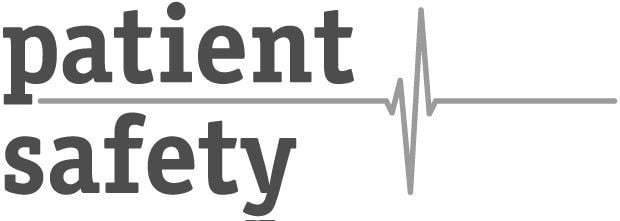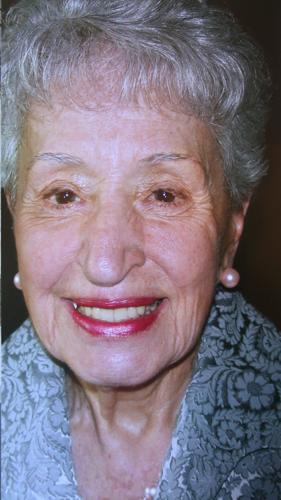Preventable medical harm is not an official cause of death, but it is killing up to 440,000 Americans a year.
At that level, medical harm would be the third-leading cause of death in the U.S.
But ask any Tucson hospital to give you a list of its fatal medical errors and the answer is no. Try to find any measure of hospital quality, and the results both vary and overwhelm.
Search for safety information on local nursing homes and assisted living facilities and what’s available is both limited and fragmented between two state agencies and the federal government.
In Arizona and most of the U.S., a lack of transparency and mandatory reporting laws put the public at a disadvantage when it comes to assessing preventable errors.
While medical malpractice lawsuits may bring accountability in some instances, it’s increasingly difficult to sue. The cases that are filed are often dropped or settled in confidence, with no details in the public court record about any wrongdoing or who admitted what.
“We can’t study errors in the medical industry the way every other industry does,” says JoJene Mills, a Tucsonan and medical malpractice attorney in Arizona for 30 years.
“There’s an attitude that this industry should not be exposed to sunlight … It’s shrouded in so much secrecy that we can’t study errors and fix them, and the consumers/patients can’t make good choices about the hospitals or providers they choose.”
Local health experts and hospital officials typically recommend that patients check two sources — the federal government’s Hospital Compare and the twice yearly Hospital Safety scores from The Leapfrog Group.
Both measures have been criticized for having old or incomplete data, scores that are not risk adjusted and information that is difficult to decipher.
“We should all rally around the notion that mistakes should absolutely be disclosed,” says Larry Aldrich, former CEO of University Physicians Healthcare in Tucson and now executive chairman of the Employers Health Alliance of Arizona.
“Transparency will allow people to ask the questions, so you have a better dialogue. What drives me nuts about health care is that all our decisions are made through anecdotes and stories rather than data and statistics.”
Hospital officials like Dr. Rick Anderson, the chief medical officer for Tucson Medical Center, say serious errors are not the best way for the public to measure hospital safety.
Anderson acknowledges there’s no one place for consumers to get comprehensive safety information. His recommendation is that people get a good primary care doctor.
“I am such a strong believer in that strong relationship between a primary care physician or a nurse practitioner and the patient, and really asking those hard questions,” says Anderson, who is a primary care doctor. “I just cringe at physicians who aren’t willing to talk and really answer patients’ questions.”
Anderson advocates bringing a friend or family member along when a patient is at the hospital.
“It’s sad to say that you need an advocate but things happen in hospitals and you want to make sure you hold nurses and doctors accountable,” he says.
“We need to wash our hands. We need to clean our stethoscopes. We need to protect patients and we should not be afraid to have patients observe and hold us accountable when we don’t do that.”
“One bad event”
TMC reports its most serious preventable medical errors to its board of directors, but the information is not public. It does not report them to any other entity.
“One bad event would taint the hospital with all the good things that we do well. … Sometimes looking at isolated incidents makes great headlines but does not always make it easy for patients (to decide) where to go for medical care,” Anderson says.
“Even the best hospitals in the country have those kind of events. Very few of them report publicly, but the best will make sure they have processes in place to get them fixed.”
Greg Vigdor, president and chief executive officer of the Arizona Hospital and Healthcare Association, favors the federal government’s Hospital Compare tool, which publishes data such as hospital-acquired infections and emergency room wait times.
“Methodologies should be transparent. Just as important, the information must be presented to patients and consumers in a way that educates rather than confounds or unduly alarms,” he says.
But in addition to Hospital Compare data, consumers should be trusted to have information on preventable harm, ask questions and put it in context, Aldrich counters.
People will die and sometimes it will be unclear whether the illness caused it, Aldrich says, but it’s important to give consumers the data anyway.
Aldrich, who favors Leapfrog as a guide, points out that existing quality measures give Tucson hospitals average to mediocre ratings. In January, three were penalized by Medicare for being among the worst-performing 25 percent nationwide for their rates of patient injuries and infections — Banner-University Medical Center Tucson, Carondelet St. Joseph’s Hospital and Tucson Medical Center.
And on Monday, when the nonprofit Leapfrog Group released its newest patient safety scores, no Tucson hospital received an A. An analysis of the Leapfrog grading system by Johns Hopkins Medicine’s Armstrong Institute for Patient Safety and Quality concluded that an estimated 33,439 lives could be saved each year if all hospitals had the same performance as those that received an A.
A “nonexistent measure”
The Affordable Care Act, which passed in 2010, places greater emphasis on patient safety and public reporting, but there’s still a long way to go both in Arizona and across the country.
The U.S. Centers for Medicare & Medicaid Services on April 21 had been scheduled to release new overall “star ratings” for hospitals.
The agency already has a star-rating system for hospitals based on patient satisfaction. The new ratings about “overall hospital quality” take 62 measures of quality and safety and summarize them as one to five stars, with five being the best.
But federal officials, who received a letter from 60 members of Congress urging delay, now say they’ll release the ratings in July. The letter said the ratings could be misleading because they do not adequately adjust for socioeconomic status and the medical complexity of some hospitals’ patient populations.
Other rankings and grading systems can be helpful but confusing since there are so many, and the ways they measure safety vary. Hospitals may do well on one, yet poorly on another.
“The truth of the matter is, we and others have been pushing for better measures of safety so we could report something that is more reliable and more comprehensive to the public,” says Nancy Foster, vice president of quality and patient safety policy for the American Hospital Association.
But for now, “that measure doesn’t exist,” she says.
National patient safety advocate Helen Haskell, who founded Mothers Against Medical Error, says hospitals need to take far more responsibility in sharing information about medical harm with the public.
“The American Hospital Association does many good things, but in this instance I think they act more as a trade organization than an improvement organization,” she says.
Haskell, a South Carolina resident whose 15-year-old son died after routine elective surgery in 2000, believes it’s up to Congress to foster change.
“But the driver for Congress and the White House is public opinion,” she says. “It takes the voices of patients, advocacy groups and the media to push them to act.”
Barriers to transparency
In Arizona, the Star identified these barriers to transparency and patient safety:
- There’s no public database of serious medical errors, and hospitals are not required to report such errors to the state.
- Hospitals conduct a “failure analysis” after a mistake through processes called “peer review” and “quality assurance.” But both are secret from the public and cannot be used in court cases.
- Medical malpractice lawsuits are difficult to file due to added requirements in Arizona law. They are also expensive, so lawyers are less likely to take on cases that don’t have promises of a large payout. Expert physician witnesses can cost as much as $1,000 an hour, for example, local lawyers say. The number of medical malpractice cases in Arizona filed in 2014 was 45 percent lower than in 2004.
- An Arizona law passed in 2009 makes it more difficult to sue emergency-room physicians. It raised the burden of proof for malpractice from the usual “preponderance of evidence” to “clear and convincing evidence,” a higher standard.
- Confidential settlements, common in medical malpractice lawsuits, prevent the public from knowing important details, including admissions of wrongdoing.
How errors are calculated
Estimates of fatal medical harm typically come from two reports. The first was the Institute of Medicine’s “To Err is Human: Building a Safer Health System,” which was published in 1999 and estimated as many as 98,000 people die in hospitals each year as a result of preventable errors. The estimate was based on records from 1984.
The estimate was initially criticized but has since become accepted by experts on all sides of health care. The American Hospital Association still uses the 98,000 number, but many other patient-safety experts cite a 2013 study published in the Journal of Patient Safety.
That study was done by now-retired NASA toxicologist John T. James, who founded the Houston-based organization Patient Safety America after his 19-year-old son died in 2002 from what James says was negligent medical care.
James estimated 220,000 to 440,000 Americans die prematurely each year because of preventable adverse events initiated while under hospital care. He used data from four studies flagging specific evidence in medical records pointing to adverse events. James categorized five kinds of errors — commission, omission, communication, context and diagnostic.
A third report from the U.S. Office of Inspector General in 2010 found that medical harm in hospitals contributed to the deaths of an estimated 180,000 Medicare patients per year. Medication errors were the most common cause of harm leading to death, the report found.
“When you are in the hospital for three days and seeing maybe 150 different people, the chance of error is high. You just hope it’s not a bad error,” says Aldrich, the former Tucson health executive.
Most estimates use data from hospitals only. Data on patients harmed in nursing homes and assisted living facilities is lagging behind, though patients and their families are often navigating a maze of providers and moving between the hospital and long-term care.
The Office of Inspector General of the U.S. Department of Health and Human Services released a report in 2014 that found 11 percent of Medicare beneficiaries discharged from a hospital to a nursing home experienced temporary harm, and that almost 60 percent of those events were preventable. Many of the adverse events were related to infections.
Politics and money
Through mergers and acquisitions, hospitals are increasingly part of large, powerful health systems.
In New York City, hospitals employ more people than Wall Street, giving them big political muscle, says Betsy McCaughey, the former lieutenant governor of New York and founder of the Connecticut-based Committee to Reduce Infection Deaths. In Arizona, Phoenix-based nonprofit Banner Health is the state’s largest private employer.
“The largest employer in New York is not the financial sector, it’s the health-care industry,” McCaughey says. “They have enormous clout with the state legislature. Enormous. And if they don’t want to tell people something, they are going to make sure it doesn’t happen.”
McCaughey at the moment is angry that New York recently released its rates of the antibiotic-resistant Carbapenem-resistant Enterobacteriaceae (CRE), but did not disclose the hospitals where it occurred. CRE is fatal in 50 percent of cases and federal officials have called it a “nightmare bacteria.”
“The hospitals are afraid people will not go to their institutions if they know CRE is there. It spreads widely in hospitals,” McCaughey says. “The fact is, they are putting their business interests ahead of the welfare of the populace.”
In Arizona, CRE is not a reportable condition so the state health department does not know how many cases we’ve had. It’s not a federal requirement to report CRE either.
The CDC estimates about 99,000 deaths per year occur as a result of healthcare-associated infections at an estimated $20 billion in healthcare costs. Infections are an increasing focus in improving patient safety because they are usually preventable.
“If you are going into the hospital in Arizona, you really should be able to find out which hospital has the lowest infection rate,” McCaughey says.
Arizona law does not require reporting of healthcare-associated infections, so the Arizona Department of Health Services does not maintain a public database like some other states, spokeswoman Holly Ward says.
And it is difficult to compare hospital rates of various infections because hospitals have different ways of capturing data, says Dr. Sean P. Elliott, director of infection prevention at Banner-University Medical Center Tucson.
“The data is old that is reported nationally,” Elliott says. “Our numbers are low for hospital acquired infections. CRE is quite rare. ... It would be difficult to quote a number to the public. It has to come with an explanation of what does this mean.”
Elliott adds that the hospital is aggressive about infection prevention and shares data every month with its infection prevention committee, though meetings are not open to the public.
In the most recent Leapfrog survey, Banner-University Medical Center Tucson and Northwest Medical Center both scored below the national average on their rates of methicillin-resistant Staphylococcus aureus (MRSA) infections.
MRSA, which can cause life-threatening bloodstream infections, is often lurking in bed linens or medical equipment, and can spread when providers don’t wash their hands between patients.
It’s difficult to use Leapfrog as a judge of hospital quality, says Joan Ivaska, senior director of infection prevention for Phoenix-based Banner Health.
“Banner has really aggressive internal targets, much more aggressive than any regulatory body or external agency,” Ivaska says. “By the time that data is released we are six to 12 months down the road and we have already done a bunch of quality improvement.”
One of the most common threats in local hospitals and long-term care facilities remains Clostridium difficile, which is known as C. diff. The CDC says C. diff is responsible for about 15,000 deaths per year, and the risk increases with age.
C. diff, which causes inflammation of the colon, is a common cause of surgical site infections and a main reason why Tucson Medical Center recently invested in six ultraviolet robots to make sure rooms are clear from the germ, which can live for long periods on hard surfaces.
“We park them in operating rooms and patient rooms that are either at risk for or had C. diff. The ultraviolet light kills the C. diff spores as well as just about every germ you can think of,” Anderson says.
“Never events”
There’s different lingo for serious medical errors in the hospital world, but many call them “never events” — incidents that should never happen, like an operating room fire, leaving a surgical instrument inside a patient or operating on the wrong patient. Others refer to such incidents as “sentinel events.”
At least 18 states have reporting requirements on serious and avoidable medical mistakes that happen in hospitals. Arizona is not one of them.
But there are problems with those laws, because states’ definitions of preventable medical errors vary greatly. Also, critics say in states where public disclosure is required, hospitals seem to report an unusually low number of adverse events.
Some hospitals have chosen to volunteer information about their errors. Brigham and Women’s Hospital in Boston, for example, has started posting errors in a blog, along with ways the hospital learned from the incidents. Anderson of Tucson Medical Center, which is Tucson’s largest hospital, says his facility is open to improvement in transparency. But it would be best and more consistent if all local hospitals made changes, such as posting mortality and complication rates and patient experience surveys on their websites, he adds.
The power of “sorry”
Tucson Medical Center has a policy that says the hospital must apologize and disclose medical errors to the affected patient.
As further encouragement for providers to apologize, Arizona law grants immunity to medical providers who say they are sorry, meaning their apology will never be used as evidence in court.
Many health experts say the act of saying “I’m sorry” dissuades patients from suing because an apology is all they really want. Still, patients are not always receiving apologies, according to Mills, the Tucson medical malpractice attorney. Some aren’t receiving any information at all, she says.
“I met with a family last week whose mother went into the hospital for flu. She was in her 60s and she died,” Mills says.
“They have yet to speak to the physician about what happened. I get about 30 calls a year where something terrible happened and no one told the patient. ... These are the people who feel like they have no one to call but a lawyer.”
Medical errors are rarely the fault of one person, stresses Dr. Tejal K. Gandhi, president and chief executive officer of the National Patient Safety Foundation.
“Saying, ‘We are just going to fire that nurse’ actually does nothing to address the issue and creates a culture where people are afraid of telling you about problems because they are afraid they are going to get fired,” Gandhi says.
“We’ve got this culture of trying to cover up and blame as opposed to a culture where people can openly talk about what the issues are and make changes to the system.”
To be sure, many hospitals and politicians and even more health care workers are serious about patient safety and trying to foster improvement. The problem is that the system works against them, says Haskell, the patient advocate.
“There is a lot of money to be made in medicine and especially in its many underlying industries,” she says. “The system is profit-driven rather than mission-driven, and as long as that is the case, patient safety will never be the top priority.”
Reporting for this project is supported by a grant from the non-profit The Commonwealth Fund through the Association of Health Care Journalists.
Next in our series: Sunday, June 5, barriers to transparent patient safety in nursing homes and assisted living facilities.


